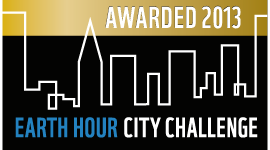San Francisco Bay Area
Posted on March, 01 2012
Land trusts a powerful protection tool
Land trusts a powerful protection tool
The San Francisco Bay Area provides a good example of the use of conservation trusts in or near urbanised areas. Around 25% of the entire San Francisco Bay Area is held in protection status. Conservation trusts can protect land for a range of purposes: nature conservation, recreation, farming, community gardening, etc. One type of trust used for protection of ecosystem services is a conservation easement, an agreement on the limits of land use.
Keywords: conservation trusts, conservation easements, land trusts, voluntary market-based instruments
The San Francisco Bay Area provides a good example of the use of conservation trusts – also land trusts and conservation easements – in or near urbanised areas. Around 25% of the entire San Francisco Bay Area is held in protection status. This has been a rapidly growing trend within the past few decades. Only in the period 1988-92, nearly 60% (32,000 ha) of all new open space in the Bay Area was acquired by land trusts.
Range of purposes
Conservation trusts can protect land for a range of purposes such as nature conservation, recreation in nature, farming, community gardening, etc. One reason for the emergence of conservation trusts was concern in the US and Canada about the loss of farmland as cities expanded. Agricultural conservation easements purchase the right to develop the land and permit farming to continue (see also Barcelona). This is similar in design to the protection of forests with Purchase of Development Rights (PDRs) where tropical forests’ timber concessions are bought but not used, in order to ensure they are not logged.
Now conservation trusts are expanding beyond protecting agricultural land and are protecting a wide range of ecosystem services available from land such as recreation in nature and habitat for biodiversity (see also Melbourne and Stockholm). One type of trust used for these purposes is a conservation easement, an agreement on the limits of land use, paid for directly or with reduced taxes, for example.
Complexity and variation
A recent study of the use of conservation easements in the Bay Area points out that little has been known about their conservation outcomes. This is not least due to a complex situation. Some 200 organisations hold around 25% of the land across the 9-county Bay Area of around 18,000 sq km and a population of more than 7 million.
Conservation easements were found to be more likely to conserve grasslands, oak woodlands, and agricultural land, while fee-simple land purchases were more likely to conserve chaparral, scrub, redwoods, and urban areas. Furthermore, while conservation easements were found to contribute to open space connectivity, they were unlikely to provide public recreation or to be integrated into local land-use plans.
A study of tidal wetland restoration projects in the Bay Area found that the involvement of many conservation actors of different kinds – with different goals, expertise, monetary resources, and principles – caused both inefficiency and creative diversity in approaches. A key lesson was the need for monitoring and reporting to enable learning over time among old and new projects.
Another example of a conservation challenge is the Bay Area’s status as a biodiversity hotspot for insect species. It contains over 50% of the insect species that are listed as endangered by the US government.
Growing in the US
Land trusts are one form of voluntary, market-based approaches to conservation. In the US their use has grown dramatically: an estimate claims that some 1,000 local land trusts protect more than 4 million acres. Land trusts are used in some 25% of Maryland’s Program Open Space. In Vermont, land trusts have been combined on a large scale with affordable housing efforts: $60 million in state government grants for a total of $235 million to establish land trusts.
References
Edward F. Connor, John Hafernik, Jacqueline Levy, Vicki Lee Moore, Jancy K. Rickman, 2002, “Insect conservation in an urban biodiversity hotspot: The San Francisco Bay Area,” Journal of Insect Conservation, 6: 247–259
A. R. Rissman, A. M. Merenlender, 2008, ”The conservation contributions of conservation easements: analysis of the San Francisco Bay Area protected lands spatial database”, Ecology and Society 13(1): 40, http://www.ecologyandsociety.org/vol13/iss1/art40/
David M. Stoms, Jason Kreitlera, Frank W. Davisa, 2011, “The power of information for targeting cost-effective conservation investments in multifunctional farmlands”, Environmental Modelling & Software, Volume 26, Issue 1, Thematic Issue on Science to Improve Regional Environmental Investment Decisions
Vermont Land Trust, http://www.vlt.org/
Philip Williams, Phyllis Faber, 2001, “Salt marsh restoration experience in San Francisco Bay”, Journal of coastal research, Special Issue No 27, http://www.globalrestorationnetwork.org/uploads/files/LiteratureAttachments/395_salt-marsh-restoration-experience-in-san-francisco-bay.pdf
State of California, http://www.bayareacensus.ca.gov/bayarea.htm
Key data are retrieved from the UN World Urbanization Prospects: The 2011 Revision, http://esa.un.org/unup/unup/index_panel2.html, and from the UN Demographic Yearbook 2011, http://unstats.un.org/unsd/demographic/products/dyb/dyb2011.htm
Text by: Aaron Thomas
Related links
- San Francisco was awarded the title National Earth Hour Capital in Earth Hour City Challenge 2013
- The conservation contributions of conservation easements: analysis of the San Francisco Bay Area protected lands spatial database
- Vermont Land Trust
- Salt marsh restoration experience in San Francisco Bay





